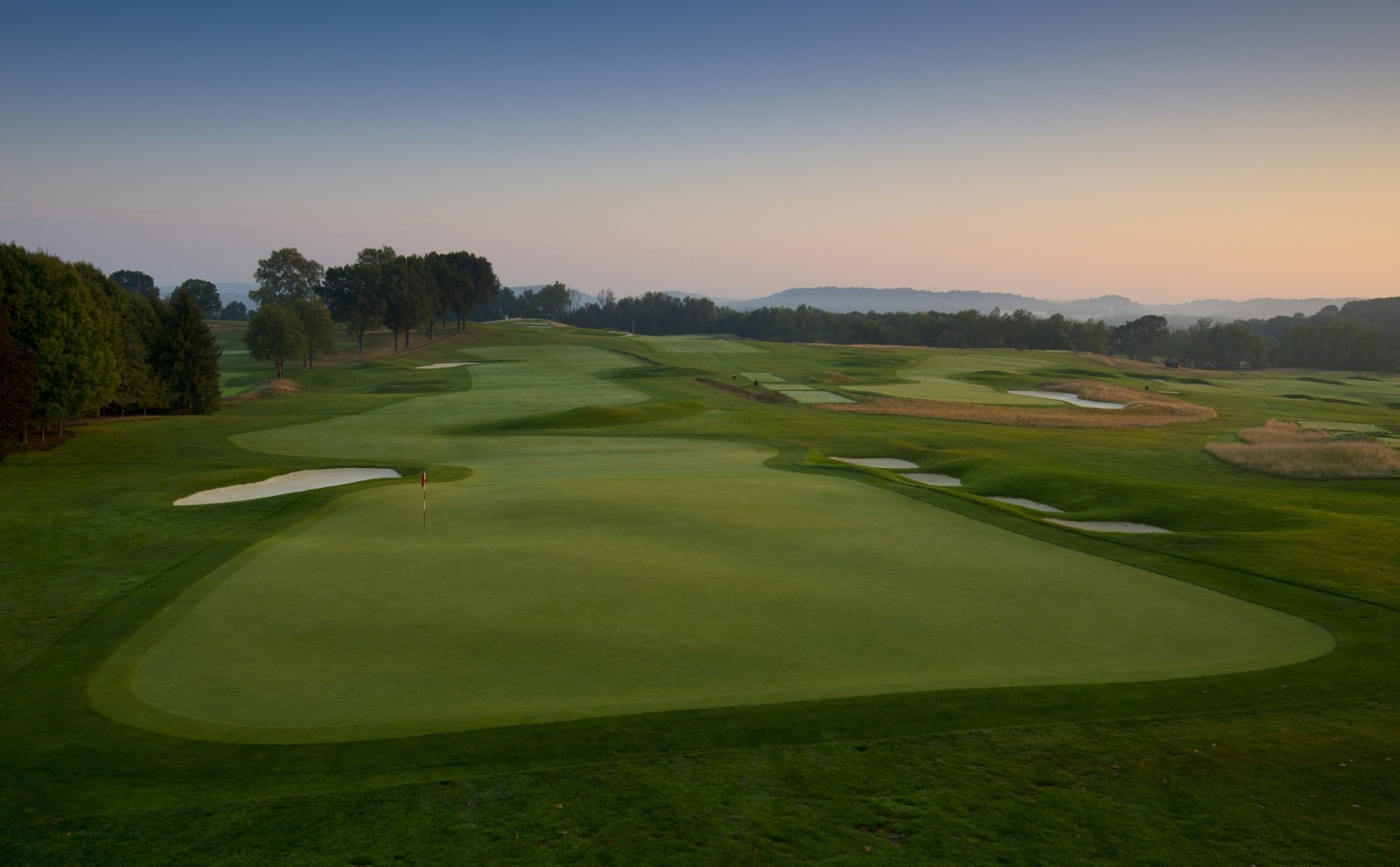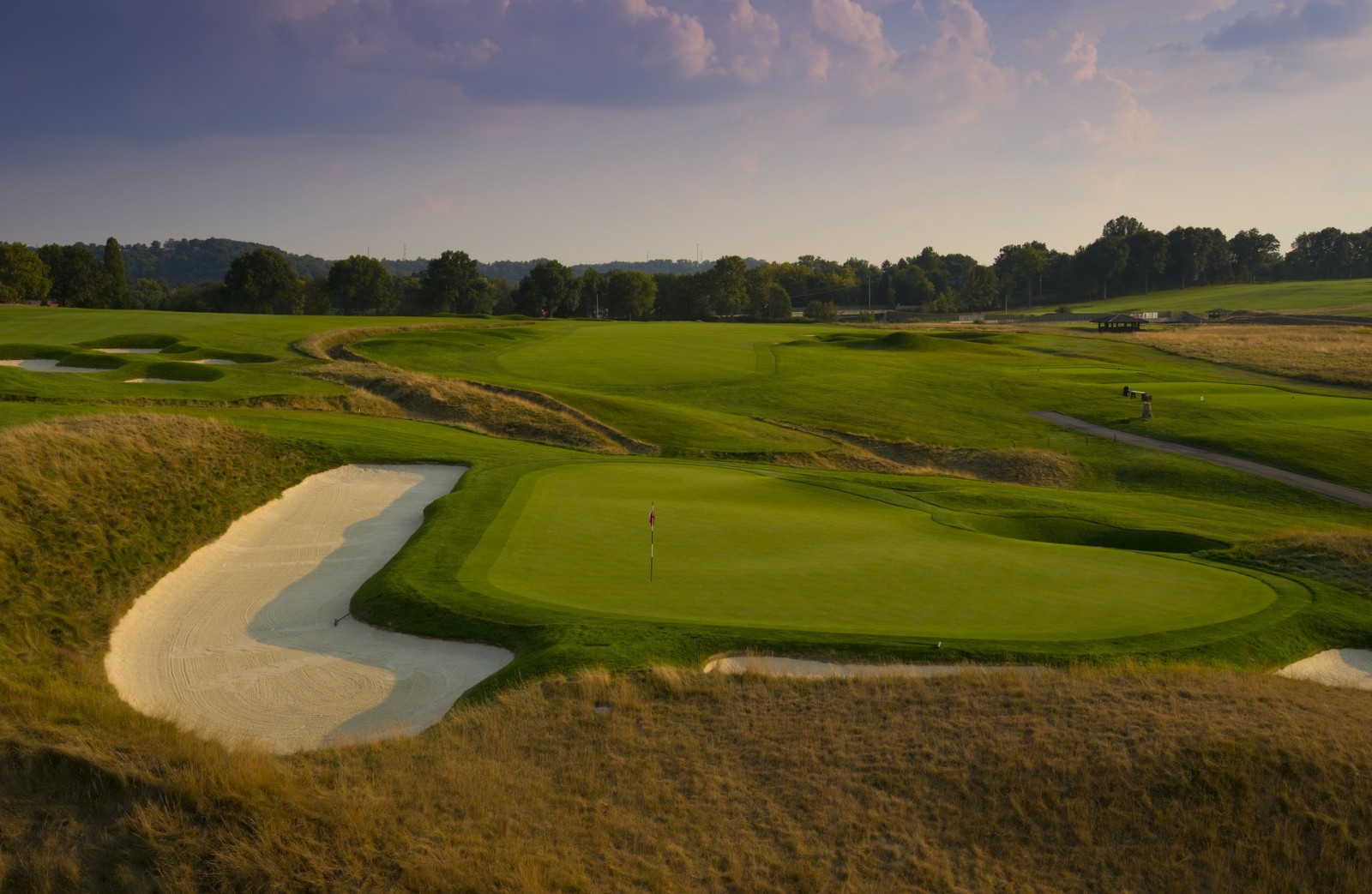When Oakmont Country Club was handed the distinction of National Historic Landmark in the 1980s – awarded to those ‘buildings, districts, objects, sites or structures of outstanding historical significance’, it was a decision no doubt taken by those that don’t have to play their golf there.
This was the site of Angel Cabrera’s U.S. Open win of 2007 with a score of +5; the highest-winning tally in 50 years of the devilish tournament.
And when it returned to Oakmont in 2016, Dustin Johnson lifted the trophy after compiling a score of -4; one of just four players to finish under par after 72 holes.
The U.S. Open will return to Oakmont in 2025, so here’s an early look at one of the most testing courses in North America.
18 Holes of Hell
Those that bet on sports will be eyeing the players best equipped to handle the rigours of Oakmont: Scottie Scheffler (5/1), Rory McIlroy, Jon Rahm and Xander Schauffele (all 10/1) considered the leading protagonists in the ante post odds.
But as the predictions made by sites like Paddy Power News will attest, Oakmont Country Club is such a gruelling test that, ultimately, the U.S. Open in 2025 may be defined by a single hole – so few and far between are the birdie opportunities available.
The layout, designed by Henry Fownes in 1903 (and toughened by Tom Fazio and Gil Hanse), has stood the test of time. It plays to around 7,300 yards for its Par 70, which is incredibly long, but has the unique distinction of being almost tree-less and boasting just a handful of water hazards.

So where does the challenge come from? Well, there are 175 bunkers for starters – making Oakmont one of the sandiest tracks on the major golf rotation. The Church Pews bunker has taken on a notoriety of its own: in play on both the third and fourth holes, the sand-trap measures 100 x 40 yards and features more than a dozen grass-covered ridges, or ‘pews’.
The green complexes also play a part. Featuring staggering slopes, they’re also laid with Poa Annua, which is one of the tougher surfaces to putt on – particularly in hot weather, when the grass can become bumpy. If the conditions hold in Pittsburgh, the greens will play lightning fast too… a problem both on approach and when putting.
At the 2016 U.S. Open, 14 of the 18 holes averaged over par. The toughest was the opening hole, a 482-yard Par 4 that saw more double bogeys (or worse) than birdies over the course of the week.
According to Golf Digest, Oakmont Country Club is the second toughest course in all of America. It’s an accolade that’s well deserved…

Winning the Hard Way
Rewind to the 54-hole stage of the 2016 US Open and Shane Lowry found himself three shots clear of the field.
But the complexities of Oakmont, allied to the pressure of winning a major, saw the Irishman crumble in the final round – one birdie and seven bogeys in his closing 76 a microcosm of what can go wrong around these 18 holes.
And in 2007, a score of +11 would have secured you a top-ten finish on the leaderboard – across the entire four days, par was broken only eight times in all.
Brad Faxon once described the greens at Oakmont as ‘the hardest I’ve ever putted on’, while Phil Mickelson – who has seen plenty in his three decades as a professional – categorised the layout as the ‘hardest course the pros have ever played’.
So good luck, and Godspeed, to those lining up at the 2025 U.S. Open.

